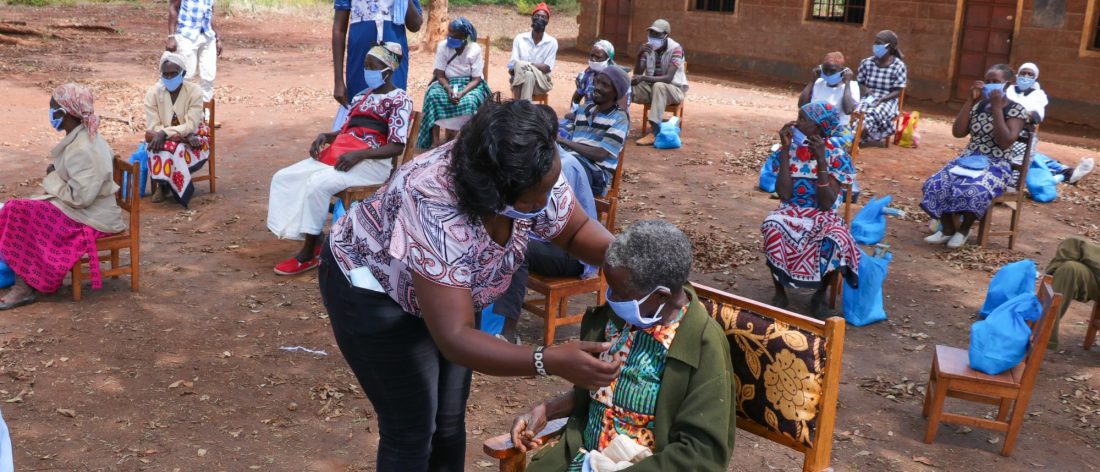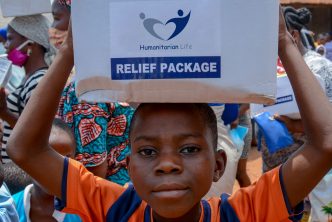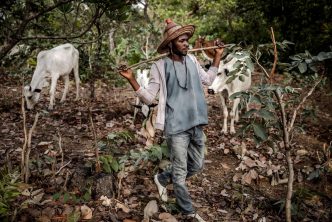Ending Extreme Poverty
By Dr Iro Aghedo
Background
Confronted by a bleak future due to escalating poverty, hunger, inequality, conflicts, diseases, and other debilitating conditions, the world’s 193 countries came up with an action plan known as the Sustainable Development Goals (SDGs) in 2015. The SDGs consist of 17 goals that address the critical human challenges within fifteen years (2015-2030). Considering the heightened security threat faced by several millions of people globally, the SDGs are a laudable project. However, the project seems overly ambitious, considering the severity of the challenges it seeks to address within a short time-frame, the poor performance profile of the predecessor Millennium Development Goals (MDGs); and the fragile nature of institutions across a number of the low-income countries where the SDGs are being implemented. Against this backdrop, this essay examines how to ‘End Extreme Poverty in All Forms by 2030’ in Africa and the challenges.
COVID-19 Scenarios
The first case of COVID-19 on the African continent was reported on the 14th of February 2020. As of the 13th of May 2020, the deadly disease had been reported in all 54 countries of the continent. However, Africa’s infection rate is not as high as Europe and other parts of the world. Countries with the highest average number of new cases per capita on the continent include Morocco, Libya, Tunisia, Cape Verde, and Botswana. After a lull since mid-July, the number of daily new cases has been rising gradually in recent weeks. In October, there was an average increase of 8{1c02100822988c48c7b0a484ab61ac3d7f398d67c2f66594d88b2db33072d9d9} in new cases each week. The infection rate increased by 13{1c02100822988c48c7b0a484ab61ac3d7f398d67c2f66594d88b2db33072d9d9} in the week leading to the 8th of November, according to the Africa Centre for Disease Control and Prevention (CDC) and the World Health Organisation (WHO).
Ten countries – South Africa, Morocco, Ethiopia, Egypt, Kenya, Nigeria, Cameroon, Rwanda, Uganda and Ghana – account for about 75{1c02100822988c48c7b0a484ab61ac3d7f398d67c2f66594d88b2db33072d9d9} of the total tests conducted on the continent. As at the 8th of November, South Africa had done just over 84 tests per 1,000 persons, while Nigeria had carried out only three tests per 1,000 as of the 7th of November. In contrast, by the 5th of November, the United Kingdom and the United States had done more than 450 and 475 tests, respectively. The mortality rate of the COVID-19 pandemic has been low in Africa despite its fragile health infrastructure compared with other parts of the world. The WHO traces this low death rate to the relatively young population in Africa where more than 60{1c02100822988c48c7b0a484ab61ac3d7f398d67c2f66594d88b2db33072d9d9} of persons are below 25. Indeed, COVID-19 is known to have a higher mortality rate among older persons and those afflicted by such health problems such as obesity and type 2 diabetes which is also uncommon in Africa. Expertise in epidemic control, low travel and outdoor living could also account for Africa coping better with COVID-19.
A Looming Food Crisis
The COVID-19 pandemic has come when most African societies face enormous challenges of insecurity, inequality, poverty, unemployment, and environmental catastrophes such as drought. Thus, the crisis’s cost will immeasurably undermine the realisation of the SDG of ending extreme poverty on the continent in 2030. It is estimated that Africa’s economy will be between US$349 billion and US$643 billion smaller in 2030 compared to the pre-COVID-19 forecast. This situation translates to poverty rates of between 35{1c02100822988c48c7b0a484ab61ac3d7f398d67c2f66594d88b2db33072d9d9} and 37{1c02100822988c48c7b0a484ab61ac3d7f398d67c2f66594d88b2db33072d9d9} of Africa’s total population. Thus, the COVID-19 pandemic will mostly knock Africa off the 2030 SDG targets, with additional 63.7 million people suffering severe food insecurity. Already, 34 African states are in dire need of food assistance.
There is a likelihood for the situation to be exacerbated by Islamic fundamentalism and insurgency, which is ravaging several parts of the continent (Agbiboa, 2017; Agheyisi, 2016). These factors will further reduce government revenues, health expenditure, and undermine African states’ debt sustainability capacity. Several African countries are faced with the uprising. For example, in October, Nigeria’s economic woes were exacerbated by the “End SARS” protest which swept across most of the cities of Africa’s most populous country and largest economy. After nearly a two-week peaceful demonstration, the youth revolt against police brutality was hijacked by hoodlums who looted and destroyed over five trillion naira worth of private businesses according to Nigeria Employers’ Consultative Association.
Managing the Double Tragedy
Africa needs to explore several policy options to realise the sustainable development goal of ending extreme poverty by 2030. Some of the options include:
- African governments and their development partners must create an environment that incentivises the industry to engender employment opportunities and job creation for restive youth and other people. One way of doing this is to accelerate the digitisation of their economies to improve resilience and productivity.
- African stakeholders must address the root causes of ethno-religious violence and insurgency to mitigate the wanton destruction of lives and investments, further exacerbating poverty, inequality and conflicts.
- African governments need to implement the African Continental Free Trade Agreement vigorously. This situation will lead to the diversification of their economies and promote trade within the African region.
- African governments and their development partners need to invest massively in health-care to ensure speedy diagnosis and treatment of diseases including Malaria, Ebola, HIV/Aids and COVID-19 pandemic. One way of ensuring this is through medical research collaboration among African states.
Conclusion
In conclusion, extreme poverty remains a massive threat to many Africans despite the SDGs’ ongoing implementation. To effectively alleviate poverty on the African continent, some Africa-specific challenges need to be addressed. These mechanisms include de-risking business, promoting economic diversification, and deploying early warning action against insurgent violence. Also, investment in health-care to withstand outbreaks of epidemics and effective implementation of the African Continental Free Trade Agreement are very important.







